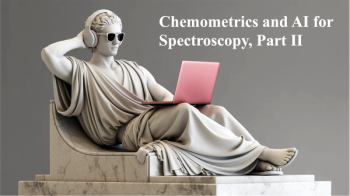News|Articles|December 19, 2023
Advancements in Non-Invasive Analysis of Historical Metal Artifacts
Author(s)Spectroscopy Staff
Studying historical ancient artifacts requires the use of a nondestructive technique to analyze the metal surfaces of these objects. This study presents two approaches that improves on existing methods when conducting alloy analysis.
Advertisement
In a recent study published in Spectrochimica Acta Part B: Atomic Spectroscopy, lead author S. Porcinai from the Ministry of Culture in Firenze, Italy, sheds light on the challenges and advancements in analyzing historical metal artifacts (1). The investigation of alloy composition remains pivotal in understanding the history and craftsmanship behind these artifacts.
Porcinai and the research team examined the efficacy of analyzing surface samples compared to shavings from certified reference materials. The goal was to enhance the accuracy and precision when collecting quantitative data. Previous research efforts in alloy analysis saw researchers use portable X-ray fluorescence (XRF) to conduct quantitative analysis (1). However, researchers were limited in the data they could collect when metal surfaces of alloys were concealed by patination layers or corrosion (1).
Porcinai and the team demonstrated in their study that when a suitable calibration model using certified reference materials in the same form (surface or shavings) was applied, quantitative data obtained from both surfaces and shavings exhibited comparable accuracy and precision (1). Repeatability tests on detected elements using the same certified reference materials demonstrated results within a 5% margin, affirming the reliability of the approach (1).
The study focused on two approaches. First, the abration of a small portion to eliminate corrosion products, and second, collecting samples in the form of shavings or micro-fragments (1).
The significance of quantitative elemental analysis in understanding ancient bronze artifacts cannot be overstated. It unravels insights into the technical prowess of craftsmen, manufacturing techniques, and even the sourcing and trade of raw materials (1). Although pXRF analysis is a widely used non-invasive technique for studying ancient copper alloys, the presence of surface irregularities has posed a challenge to precise quantification of bulk properties (1).
Historical metal artifacts are a key ingredient to learning about the past in a nuanced way. By refining non-invasive analysis techniques, researchers aimed to decode the intricate stories embedded in these invaluable relics while preserving their integrity for generations to come (1).
This article was written with the help of artificial intelligence and has been edited to ensure accuracy and clarity. You can read more about our
Reference
(1) Porcinai, S.; Cagnini, A.; Galeotti, M.; Ferretti, M. Quantitative Analysis of Copper Alloys by Means of Portable X-ray Fluorescence: A Comparison Between Analysis of Shavings and Surfaces. Spectrochimica Acta Part B: At. Spectrosc. 2023, 210, 106808. DOI:
Newsletter
Get essential updates on the latest spectroscopy technologies, regulatory standards, and best practices—subscribe today to Spectroscopy.
Advertisement
Advertisement
Advertisement






